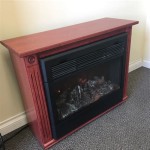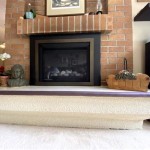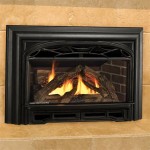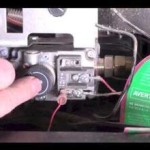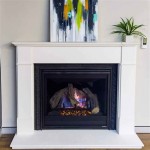Gel Fireplace Insert Reviews: A Comprehensive Guide
Gel fireplace inserts offer a ventless and potentially more convenient alternative to traditional wood-burning or gas fireplaces. They utilize gel fuel, typically composed of isopropyl alcohol and a thickening agent, to produce flames. Interest in these inserts has grown due to their relative ease of installation and the absence of requirements for chimneys or gas lines. However, understanding the features, benefits, and limitations of gel fireplace inserts is crucial before making a purchase. This article provides a comprehensive overview, covering key aspects to consider when evaluating different models and brands.
Understanding Gel Fuel and Its Properties
The core of a gel fireplace insert lies in its fuel. Gel fuel usually comes in cans or cartridges designed specifically for use in approved appliances. It's important to understand the burning characteristics and safety aspects associated with gel fuel.
The primary component, isopropyl alcohol, is highly flammable. When ignited, it produces flames, heat, and carbon dioxide and water vapor as byproducts. Reputable gel fuel manufacturers adhere to safety standards in the production process to minimize risks associated with handling and burning. However, users must meticulously follow the manufacturer's instructions regarding storage, handling, and refueling.
One of the commonly cited benefits of gel fuel is its clean burning nature. Compared to wood-burning fireplaces, gel fuel produces no smoke, soot, or ash. This eliminates the need for chimney sweeping and reduces potential indoor air pollution. However, it is essential to remember that some carbon dioxide is still released. Adequate ventilation is still important, particularly in smaller spaces.
The burn time per can of gel fuel varies depending on the size of the can and the intensity of the flame. Typically, a single can can burn for approximately 2-3 hours. The heat output is also variable but generally lower than that of traditional fireplaces. This is a crucial factor to consider for those seeking significant supplemental heating.
Gel fuel needs to be stored in a cool, dry place away from direct sunlight and sources of ignition. It is important to keep it out of reach of children and pets. Refueling a gel fireplace insert should only be done after the flames are completely extinguished and the unit has cooled down completely. Adding fuel to a burning or hot unit can result in dangerous flare-ups.
Key Features to Evaluate in Gel Fireplace Inserts
When selecting a gel fireplace insert, several key features should be carefully evaluated to ensure it meets your needs and preferences. These features impact not only the aesthetics but also the functionality and safety of the unit.
Material and Construction: The materials used in constructing the fireplace insert influence its durability, appearance, and heat resistance. Common materials include steel, cast iron, and various metal alloys. Steel inserts typically offer a sleek, modern look, while cast iron inserts provide a more traditional aesthetic. The quality of the welding and the finish are important to assess. Look for inserts that are sturdy and well-constructed to withstand repeated use.
Design and Style: Gel fireplace inserts come in a wide range of designs to complement different interior decor styles. Options include traditional, contemporary, minimalist, and rustic designs. Consider the existing decor of the room where the insert will be placed and choose a style that blends seamlessly. Some inserts feature decorative logs, stones, or glass to enhance the visual appeal of the flames.
Size and Dimensions: The size of the fireplace insert should be proportionate to the opening where it will be installed. Accurate measurements are crucial to ensure a proper fit. Consider the depth of the insert, as it can affect the amount of space it occupies in the room. Larger inserts generally provide a larger viewing area for the flames but may also require more gel fuel to operate.
Safety Features: Safety is paramount when dealing with any type of fireplace. Look for inserts that have safety features such as a sturdy base to prevent tipping, a protective screen or guard to prevent accidental contact with the flames, and a fuel containment system to prevent spills. Some models may also include oxygen depletion sensors that automatically shut off the unit if oxygen levels become too low.
Flame Visibility and Control: The visibility of the flames is an important aesthetic factor. Some inserts have wide viewing areas with clear glass panels that offer an unobstructed view of the flames. Other inserts may have smaller viewing areas or decorative grates that partially obscure the flames. Look for inserts that allow you to adjust the height of the flames to control the heat output and visual effect. Some models include a snuffer tool that makes extinguishing the flames easier and safer.
Ease of Use and Maintenance: The ease of use and maintenance of a gel fireplace insert can significantly impact your overall experience. Look for inserts that are easy to ignite and extinguish. The fuel canisters should be easy to load and replace. Minimal maintenance is generally required, but regular cleaning to remove dust and debris is important to maintain the appearance of the unit.
Advantages and Disadvantages of Gel Fireplace Inserts
Before committing to a gel fireplace insert, weighing the advantages and disadvantages is essential to determine if it aligns with your needs and expectations. This helps in making an informed decision.
Advantages:
Ventless Operation: The primary advantage of gel fireplace inserts is that they do not require a chimney or venting system. This makes them suitable for homes, apartments, and other spaces where traditional fireplaces are not feasible. The absence of venting also simplifies the installation process and reduces costs.
Ease of Installation: Installing a gel fireplace insert is typically a straightforward process. Most models can be placed directly into an existing fireplace opening or mounted on a wall. Minimal tools and expertise are required. This makes them a convenient option for homeowners who want to add a fireplace without major renovations.
Clean Burning: Gel fuel burns cleanly, producing no smoke, soot, or ash. This eliminates the need for chimney sweeping and reduces indoor air pollution. This makes gel fireplaces a more environmentally friendly alternative to wood-burning fireplaces.
Portability: Some gel fireplace inserts are designed to be portable, allowing you to move them from room to room as needed. This flexibility makes them a versatile heating and decorative option. Portable models are particularly useful for renters or individuals who move frequently.
Aesthetic Appeal: Gel fireplace inserts offer a realistic flame appearance that can enhance the ambiance of any room. They come in a variety of styles and designs to complement different decor styles. The ability to customize the flame height and add decorative elements further enhances their aesthetic appeal.
Disadvantages:
Lower Heat Output: Compared to traditional wood-burning or gas fireplaces, gel fireplace inserts produce relatively low heat output. They are not typically suitable as a primary heating source for large spaces. Their main function is often decorative, offering supplemental heat for smaller rooms.
Fuel Cost: The cost of gel fuel can be relatively high compared to other heating options. The fuel needs to be regularly replenished, which can add to the overall cost of operating the fireplace. It's important to factor in the ongoing fuel expenses when evaluating the long-term cost of ownership.
Ventilation Requirements: While gel fireplaces are ventless, they still require adequate ventilation to prevent the buildup of carbon dioxide. Insufficient ventilation can lead to health risks. It's crucial to ensure proper airflow in the room where the fireplace is used.
Safety Concerns: Gel fuel is flammable and must be handled with care. Improper storage, handling, or refueling can lead to accidents. It's important to follow the manufacturer's instructions carefully and take necessary precautions to prevent fires or injuries. Never leave a burning gel fireplace unattended.
Odor: Some gel fuels may have a slight odor when burning, which can be unpleasant for some individuals. While most high-quality gel fuels are designed to minimize odors, it's important to choose a brand that is known for its clean-burning properties.
Evaluating Brands and Specific Models
The market for gel fireplace inserts includes several brands and models, each with its own features, price points, and performance characteristics. Evaluating specific brands and models based on user reviews and expert opinions is a critical step in the selection process.
Reputable brands generally invest in quality materials, robust construction, and safety features. They often provide comprehensive warranties and customer support, providing reassurance regarding the product's reliability and longevity. Reading customer reviews can provide valuable insights into the real-world performance of different models, including their heat output, flame appearance, and ease of use.
Some models offer additional features such as remote control operation, adjustable flame height, and integrated timers. These features can enhance the convenience and usability of the fireplace. However, they may also add to the overall cost of the unit.
It's important to consider the specific needs and preferences when evaluating different brands and models. For example, if you prioritize portability, you may want to choose a smaller, lightweight model that is easy to move. If you prioritize heat output, you may want to look for a larger model with a higher BTU rating.
Comparing prices from different retailers is also essential to ensure you get the best possible deal. Look for sales, discounts, and promotions that can lower the overall cost of the fireplace insert and the fuel.

Real Flame Devin Ventless Gel Fireplace Com

Gel Fireplace Logs Can Transform An Unused Future Expat

Real Flame 18 In Convert To Gel Log Insert Oak Com

5 Best Electric Fireplace Inserts According To Reviews Modern Blaze

What Are The Pros And Cons Of A Gel Fuel Fireplace Upgradedhome Com

Artificial Fireplaces Gel Vs Electric Gas Log 2024 Today S Homeowner

ᑕ❶ᑐ Fireplaces Are Heading Into Tech What S New Here

Real Flame Devin Ventless Gel Fireplace Com

Comfortbilt Hp22i Ss Pellet Stove Fireplace Insert

Flex 86rc Bxr Right Corner Fireplace Insert Ecosmart Fire


